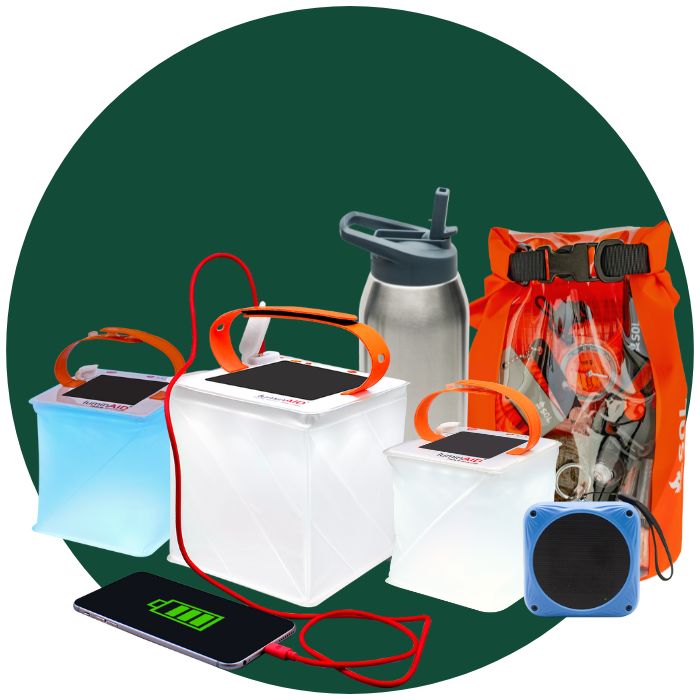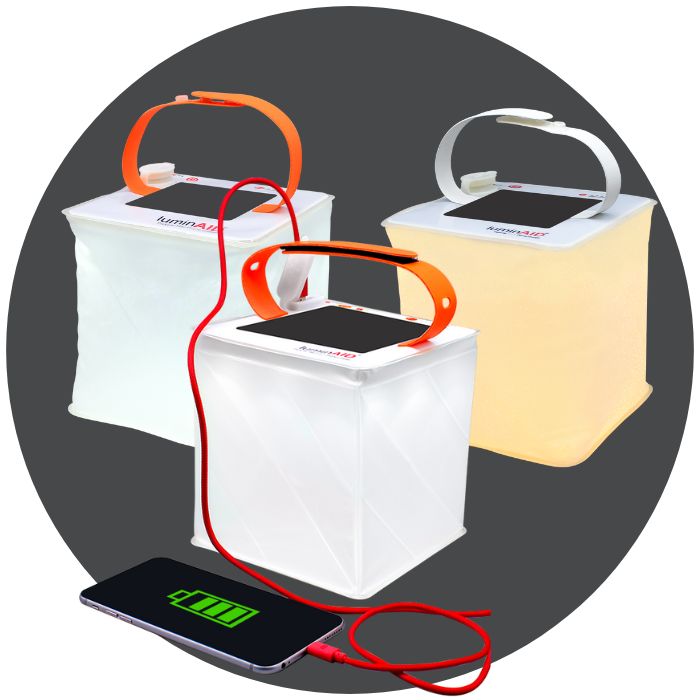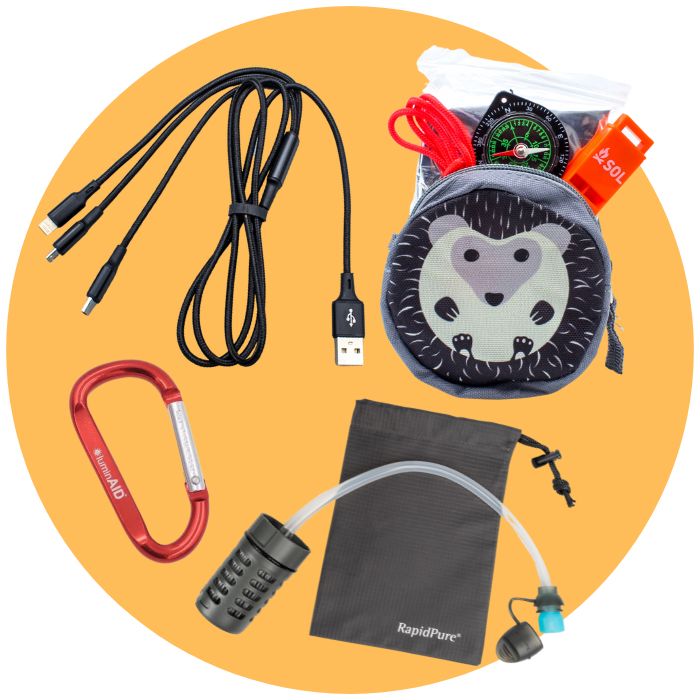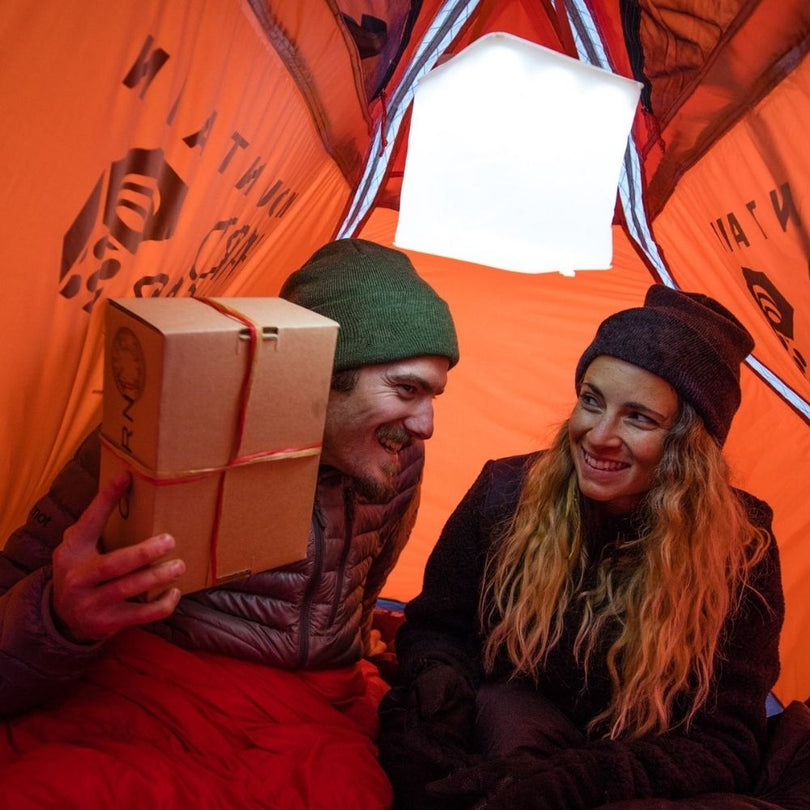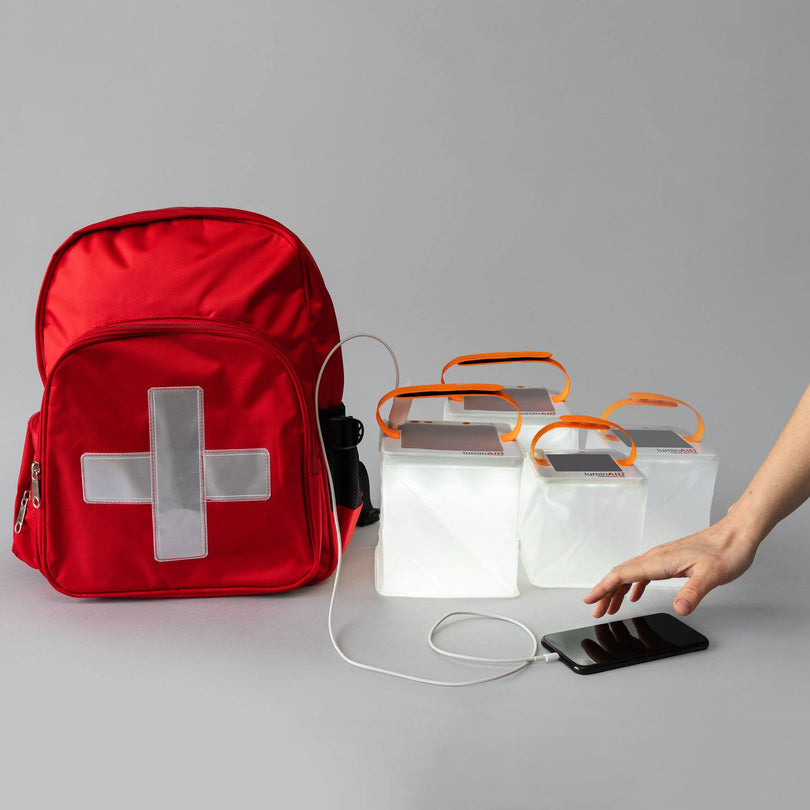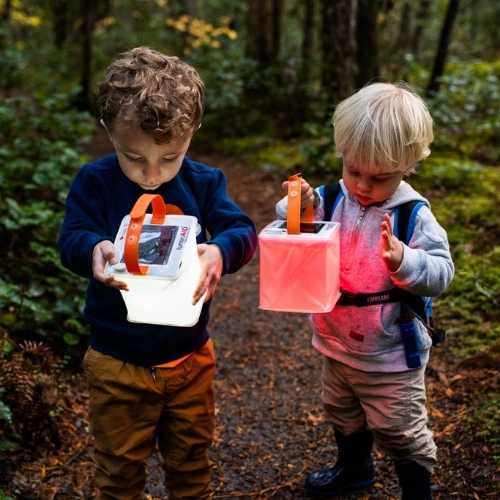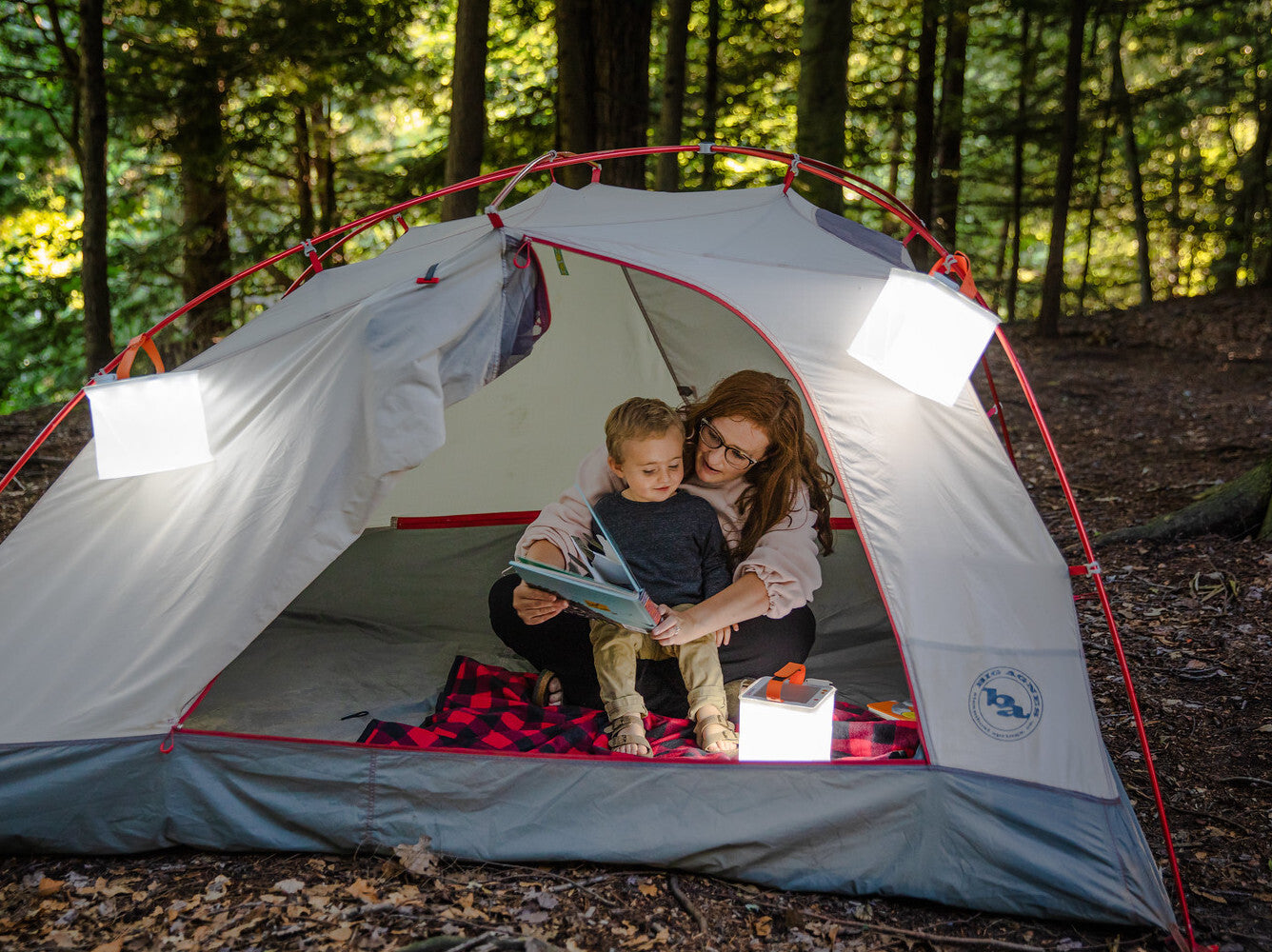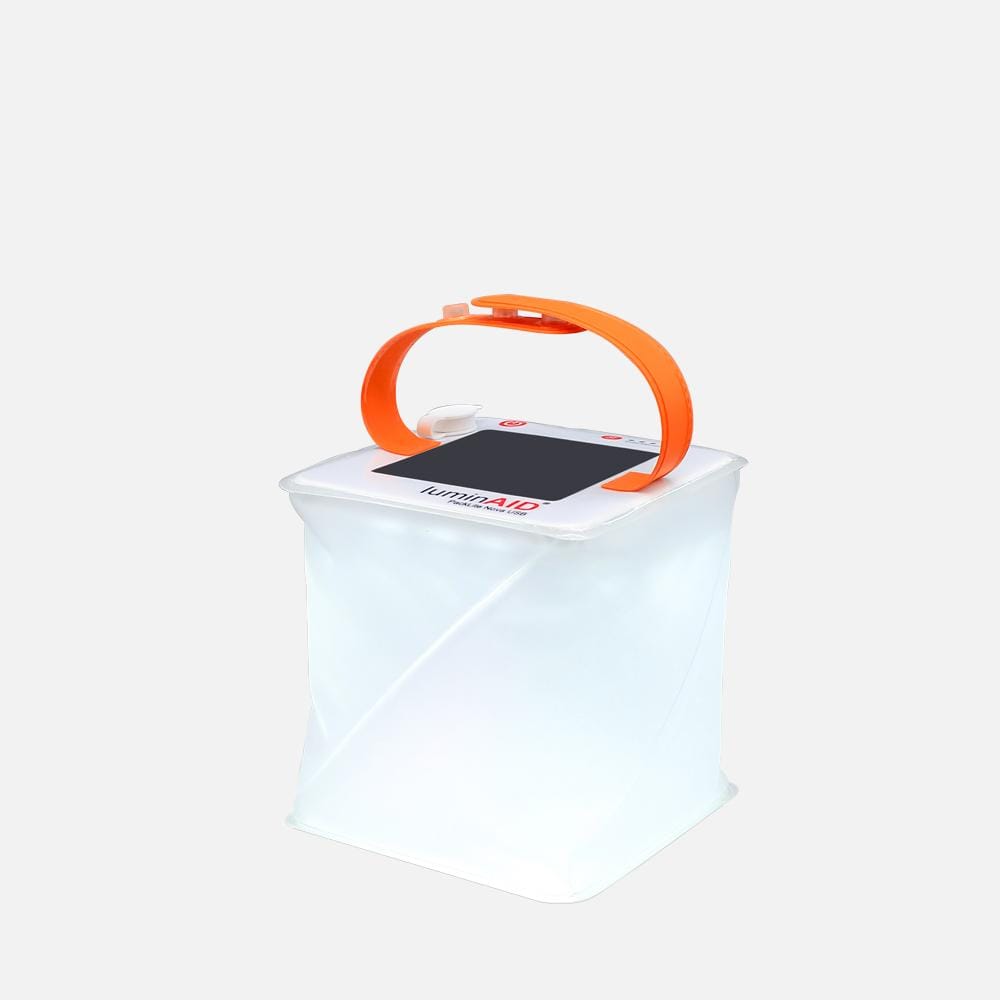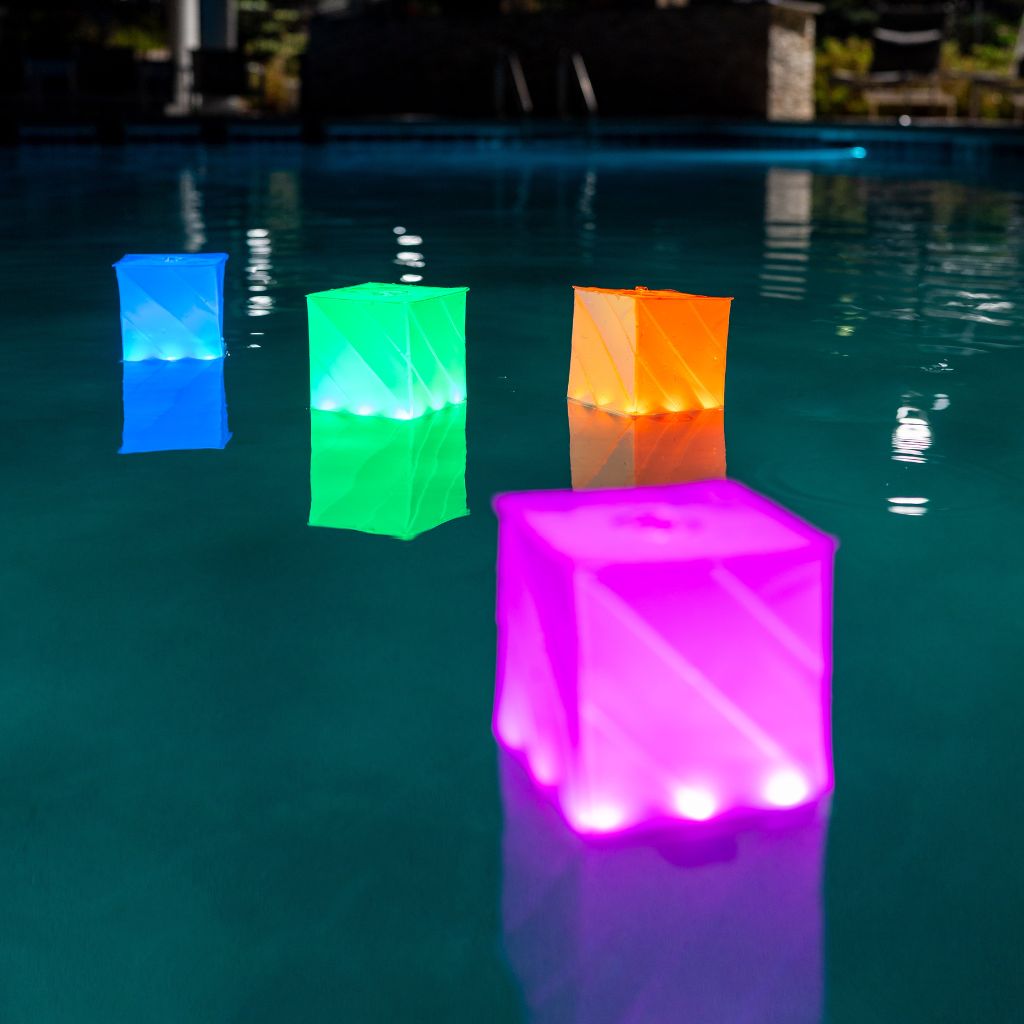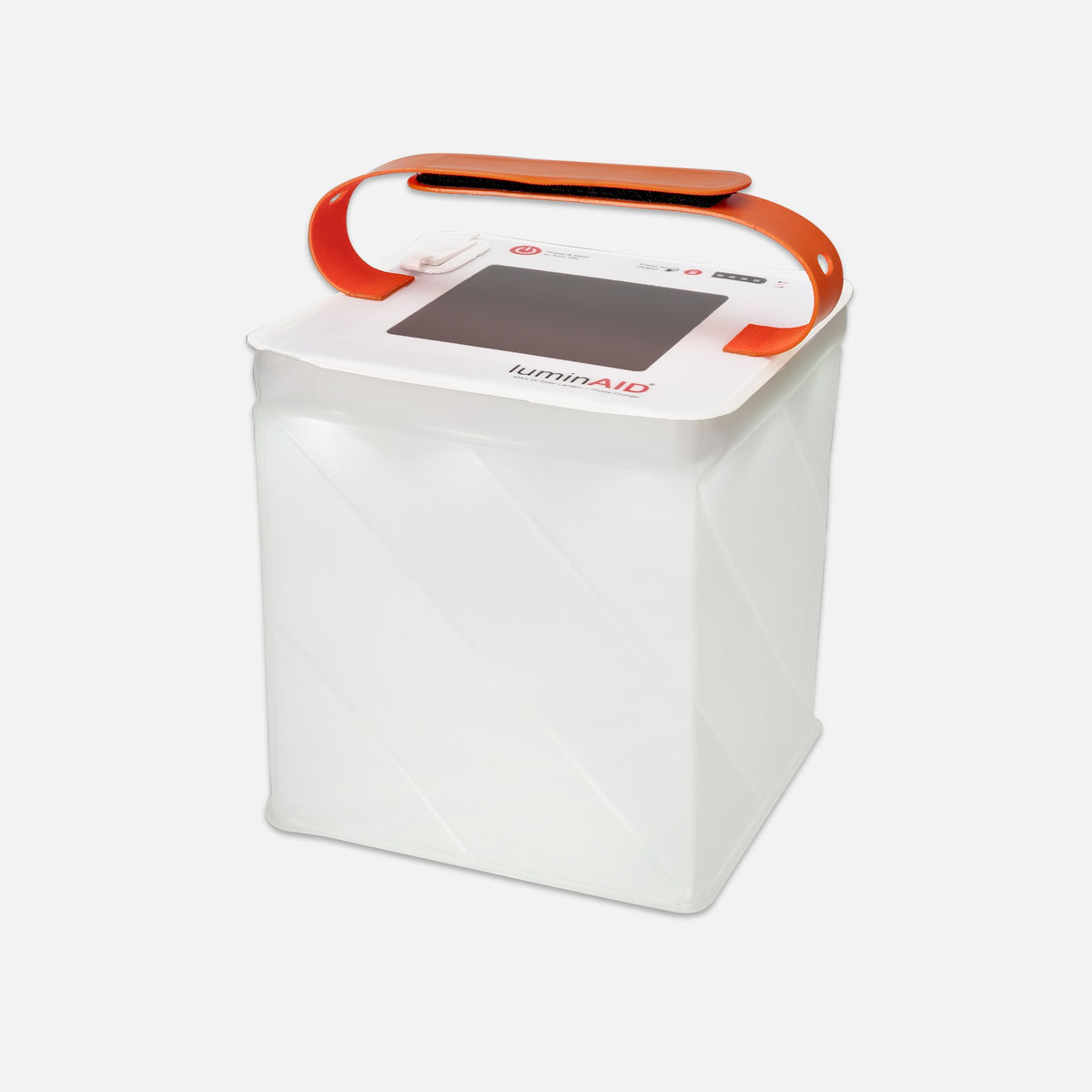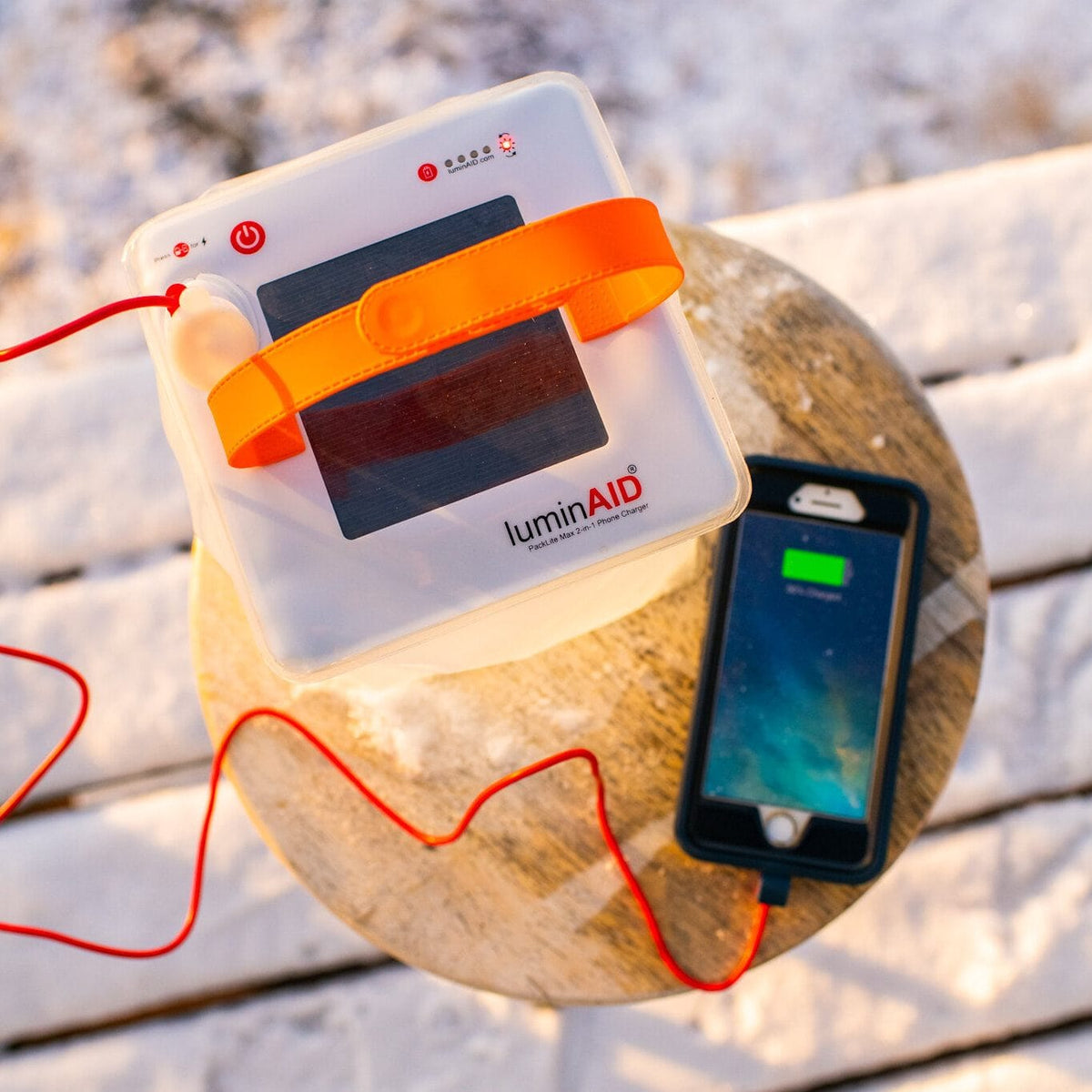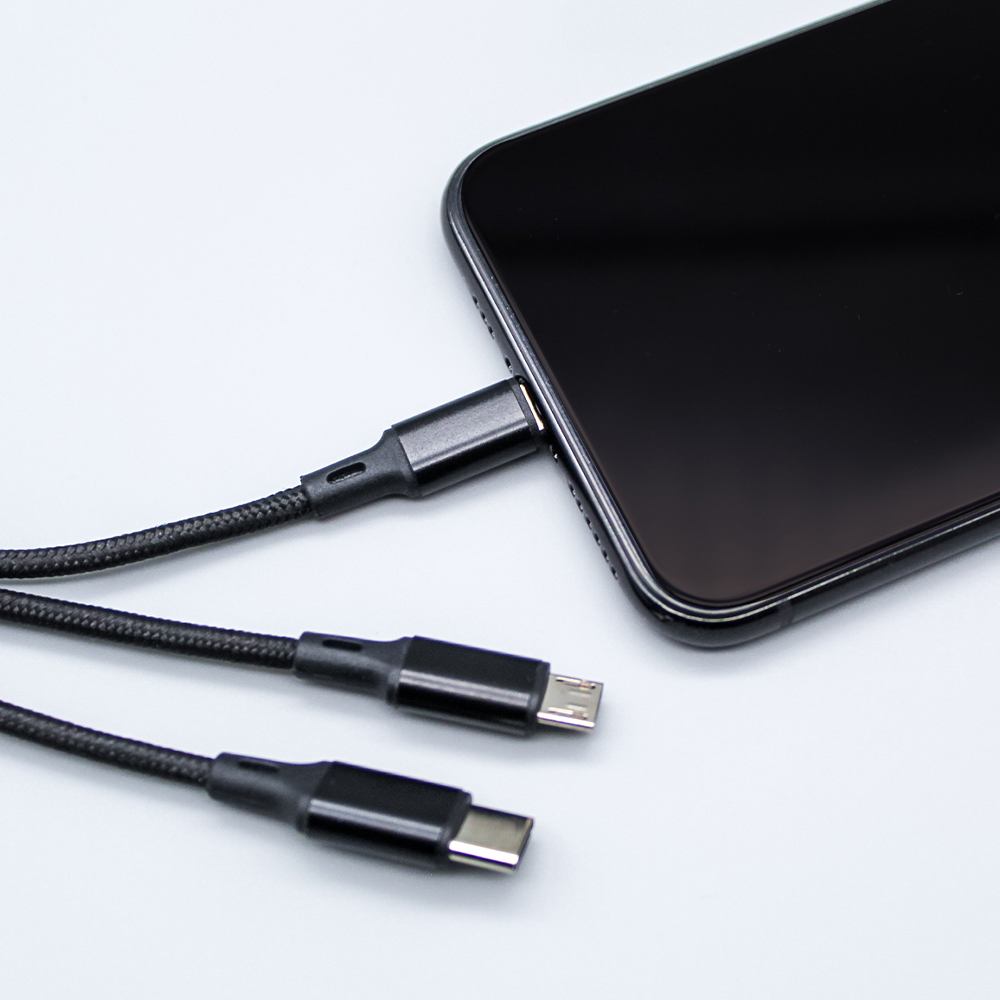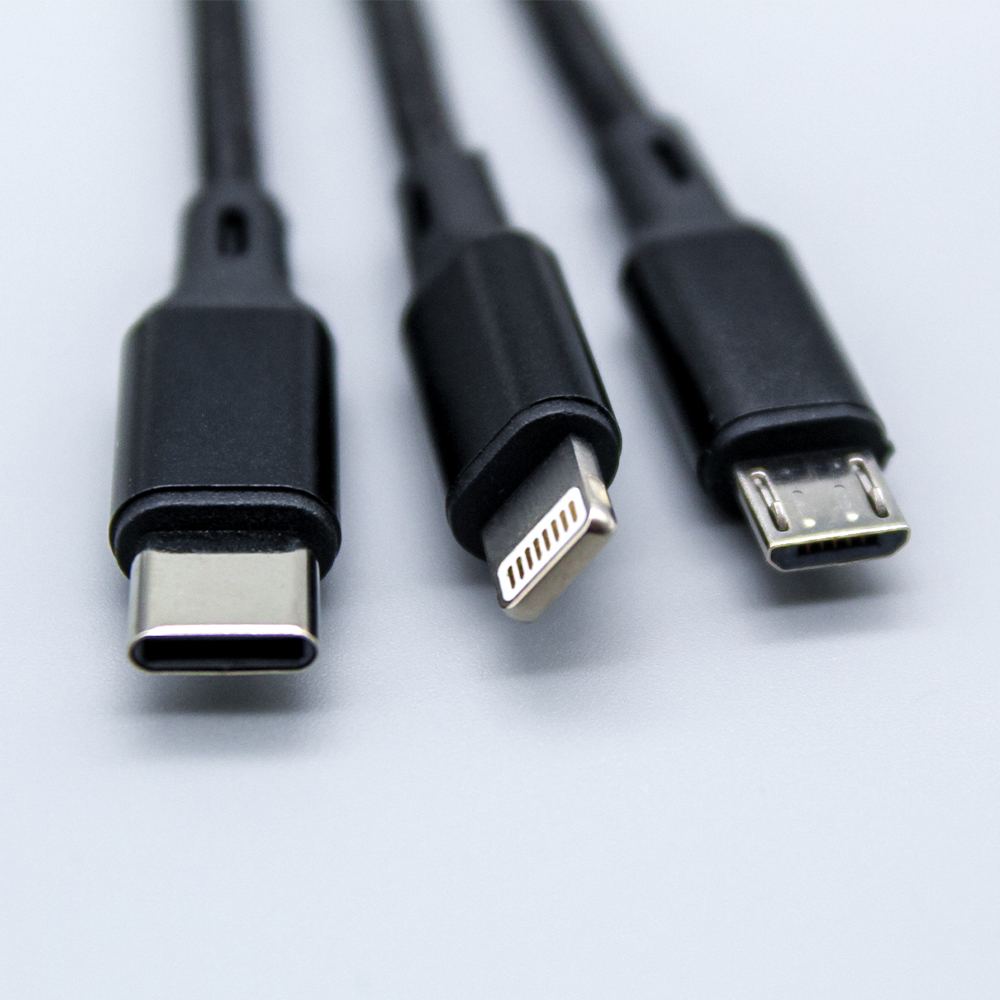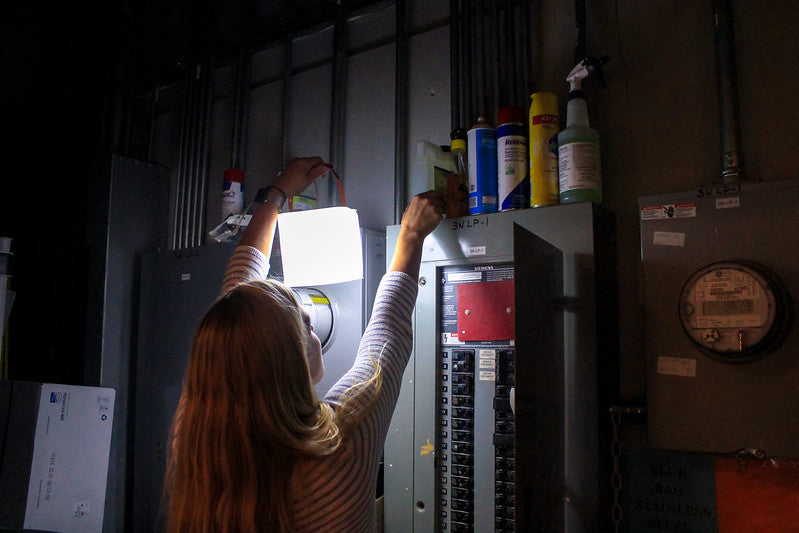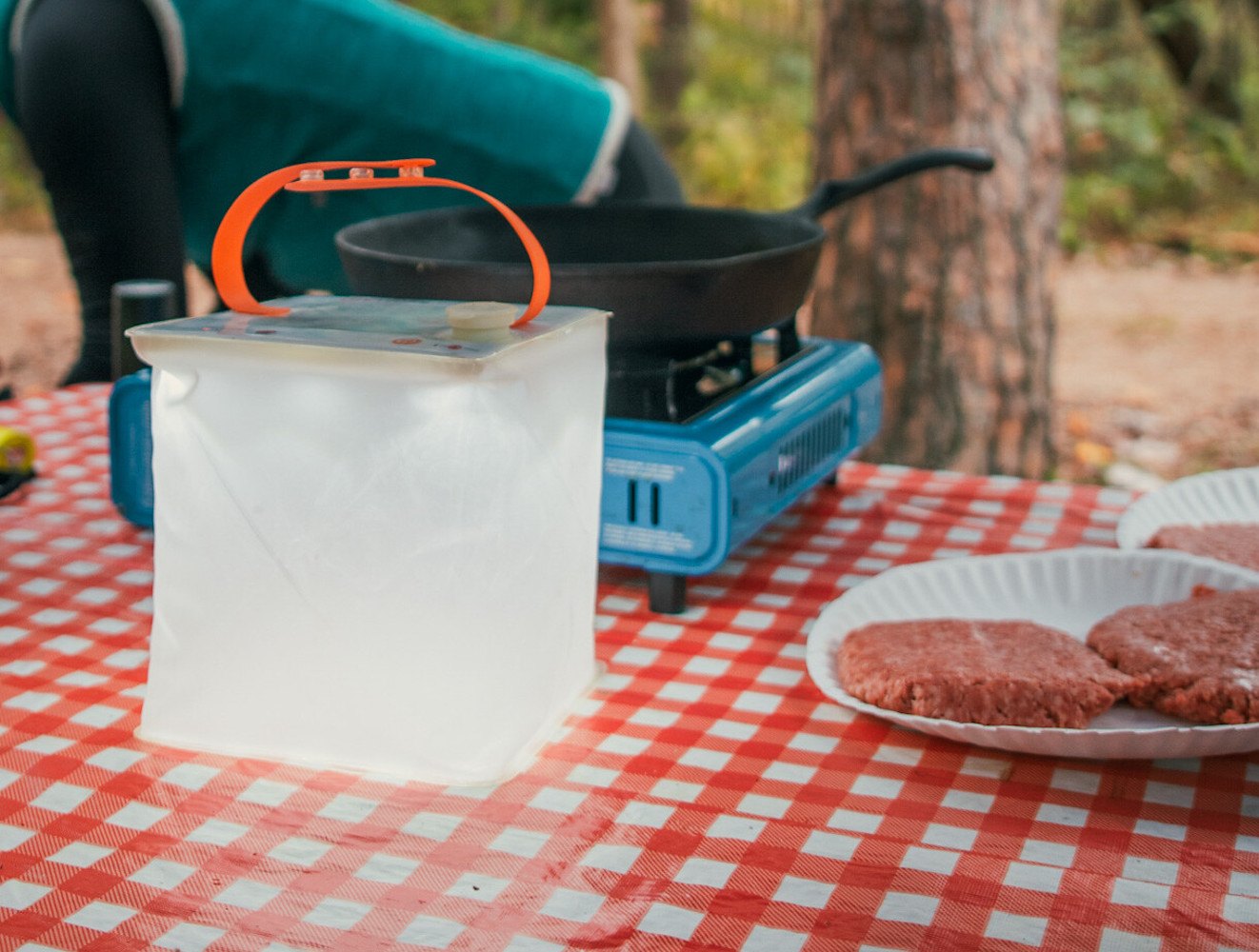If you’re a casual camper or a camping enthusiast, you’ve come to the right place. A trip is in your future and we have some tips on everything you need to make your time in nature the best it can be. Whether you’re planning a weekend trip or a week-long adventure, we’re here to help you prepare for the 2022 camping season.
Part of the joy of camping is that you don’t need a whole lot to live outdoors. Nevertheless, no one wants to cut their trip short because they forgot to pack an essential item! Sometimes trip planning makes it seem like there are hundreds of things you need for a camping trip, but it doesn’t have to be that complicated.
That’s why we’ve compiled every camping item that we think is absolutely essential. While you’re packing, use this handy list to make sure you’ve covered all your bases.
Prepping for Camping
How many people
Before you start packing, you need to determine who is coming. This helps answer a lot of preliminary planning questions, like:
- How many tents will you need to pack?
- How much food do you need to pack?
- How many cars will you be taking?
- Will you need to bring entertainment for kids?
- Does anyone have pets that they are bringing with them?
- What sort of activities will the group want to do, and what should you bring to prepare?
How long is the trip
This is also an important preliminary question that determines how you plan for your trip.
The length of your trip informs:
- How much food and water you need to pack
- How many clothes you need to pack
- The variety of weather you may experience
You must consider how many days you’ll be camping before you can begin gathering supplies.
How many meals
This is an offshoot of the trip length question, and it’s important to start meal planning early. The food you bring is what makes or breaks your trip–you want to have enough, and you want it to be delicious.
When planning camping meals, think about:
- How many meals you will need
- How many people each meal must feed
- The appetite of each group member
- Packing meals that are shelf-stable and easy to prepare
- Your plan for storing food, cooking meals, and washing dishes
Camping Essentials for Everyone
Personal Care
First aid kitThis is an essential for any adventure. You never know when you’ll need it, but when you do, you’ll be glad you brought it along. Especially if you’re camping with kids!
A wilderness-focused emergency kit like Adventure Medical Kits is a great option, because it has everything from bandages to life-saving tools. Plus, it’s all packed in a portable, water-resistant bag!

Source: Kati Whelan
Water
The National Park Service recommends bringing 2 liters of water, per person per day.
While it makes sense to store most of this in large water containers, make sure to also bring plenty of water bottles, at least one one-liter bottle per person.
While an insulated bottle keeps your water cold, it’s also heavier, which is a problem if you’re going to carry it around all day. That’s why many opt for BPA-free plastic water bottles, which are lightweight (and don’t get dents!).
If your camping trip is on the long side, it’s probably not feasible to pack enough water–you’ll need to bring a water filter to purify water from a natural source.
We recommend RapidPure. They offer a selection of water purifiers, which range from personal water bottles to gravity systems that purify large amounts of water.
The bottom line is that you need to plan to have more than enough water on your camping trip, and a reliable means of purifying more in case you run out of your supply.
Sunscreen
Sunscreen is essential no matter the weather.
If you’re going to be outside for the whole day, chances are you’re going to get some sun exposure. No one likes to deal with sunburns, especially when you’re going to be under the sun constantly!
Choose a sunscreen that you know your skin reacts well to. This sunscreen from EltaMD is safe for all skin types. Neutrogena also makes gentle sunscreen and has many waterproof options.
If you end up getting burned, aloe vera gel is a great treatment for sunburns. This natural remedy soothes and moisturizes your skin, and drastically reduces burn healing time.
Insect repellents
The reality of being in nature is that you’re going to get a few bug bites. However, there are prevention and treatment measures you can take that will make your camping trip comfortable and painless.
It is essential to carry an insect repellent like Natrapel. When sprayed on skin, it repels common insects and bugs and has 20% concentration of Picaridin, a repellent chemical that’s as effective as DEET but odorless and less harsh on fabrics.
Since sprays can’t always keep all the bugs away, we also recommend a gel from AfterBite to soothe any bites you get. An itch-relief medication is always good to have on hand, especially if you are camping with kids–bug bites are the worst for little ones!
Tick tweezers
If you’re camping in an area with ticks, these are a must.
Ticks pose a real danger to us, as they can carry bacteria and viruses–that’s why you need to check yourself for ticks after every day spent in nature, especially if you are hiking through brush.
If you find a tick, don’t panic–grab your tick tweezers and remove it as quickly as possible. You may have heard of other tick-removal methods; however, this is the safest and most reliable way to remove ticks.
If you want to take an extra precaution against ticks, use Ben’s Tick Repellent. It’s extremely protective and odorless. Don’t forget to check for ticks no matter what, though!
Toilet paper
Not all campsites have bathrooms (and not all campsite bathrooms are well-stocked), so it’s a great idea to pack this essential just in case.
Plan for a way to pack out your used toilet paper–though it might seem gross, it’s much better than leaving it in nature.
If for some reason you absolutely can’t pack out your toilet paper, make sure it’s biodegradable, and bury it at least six inches underground.
Hand sanitizer
Running water is not always nearby when you’re in the wilderness. If you need to clean your hands, hand sanitizer is often your best option.
A small bottle is lightweight and will be more than enough for your trip. It also serves as a disinfectant for minor wounds when in a pinch.
Though hand sanitizer is very useful, it doesn’t do a good job of cleaning actual dirt off your hands–pack some wet wipes in case you need to do that. These are especially great for kids!
Toiletries
Bring along whatever toiletries you use at home. Travel-size containers are practical and a great way to save space.
Be sure to pack your toiletries in leak-proof bags so they don’t damage other items if they spill.
Remember to bring a supply of necessities you don’t use every day but may still need, such as feminine hygiene products and allergy medications.
No matter what, don’t forget a toothbrush, toothpaste, and deodorant!
Essential Camping Gear
Now that we’ve covered items you’ll need when on-the-go in nature, let's talk about what you should have back at camp.
Tent
The number one essential item for camping is a tent. It provides you shelter and safety from the elements while you’re sleeping.
In general, tents have just enough room for the number of people they are said to fit, so if you want some extra space, plan on packing a tent that fits more people than your group size.
When you’re choosing a tent, plan for adverse weather conditions–make sure your tent is durable and is either waterproof or comes with a rainfly. Coleman tents are a good place to start, and REI offers many reliable options as well.
If you’re not ready to invest in a tent, you may be able to rent one through a gear rental service or a local camping store.

Source: Nick Zupancich
Tarps
Tarps are incredibly versatile and an important camping essential. They’re waterproof, durable, and insulating.
We recommend that you put a tarp under your tent to protect it from the ground and reduce cleanup time. This is especially important when it rains–the tarp will block all ground water from seeping into your tent’s floor, which keeps your sleeping bags (and you!) warm and dry.
Tarps can also:
- serve as a doormat for your tent where you can store shoes and anything else you want to leave outside the tent.
- be converted into a cooking space, a shade from sun, and even a makeshift tent.
Bring at least two of this essential–one for your tent, and one for anything else that comes your way.
Rope
Though it may not be the first necessity that comes to mind, rope is another extremely useful camping essential.
With rope, you can easily hang up tarps for makeshift shelter, make a clothesline to dry clothes and towels, and tie items to the top of your car (as a last resort, and using secure knots).
Rope is also an important survival tool, and can be used to rescue someone who has fallen off a trail, or to cross a river.
Always bring a large amount of lightweight rope on your camping trip. It’s better to have more than to not have enough.
Sleeping bags
Well-insulated sleeping bags are essential to a good night’s sleep while camping. Though they tend to be pricey, think of your sleeping bag as a long-term investment in your safety and comfort.
If you can afford it, get a sleeping bag that can withstand temperatures below freezing. Even if you don’t think you’ll be camping in the winter, temperatures drop rapidly at night, and if you’re at a high elevation, you can experience freezing nights, even in the summer.
Though there are many low-cost sleeping bags that function well if you aren’t ready to spend a lot, we recommend investing in a well-insulated and water-resistant sleeping bag. You’ll thank yourself later!
Inflatable bed / mattress, pillow, blankets
Sleeping pads are also essential for comfort while camping. They are extremely lightweight and packable, and elevate you from the ground to provide extra cushioning and warmth, especially on chilly nights.
If you’ve got a lot of tent space and don’t mind the extra setup, an air mattress works well, too.
Don’t forget to bring a pillow! If you have room, you can bring your pillow from home–there are also many inflatable options that take up less space.
Though blankets are unnecessary when you have a well-insulated sleeping bag, they can be a comfort around the campfire and in the tent. If you have room, bring a blanket or two! Check out these lightweight and packable camping blankets, designed specifically to insulate you from the elements.
Portable chairs
Even if you’re staying at a campsite with picnic tables, camping chairs are an essential that adds a lot of comfort to your trip.
They’re great to relax in after a long day’s hike, and are a must for any campfire. Cup holders are a big bonus, but if you’re looking for an ultra-lightweight option, check out Helinox camping chairs.
No matter the brand, this camping staple is lightweight and portable, and really not a hassle to bring along. You’ll be happy to have these chairs waiting for you back at camp.
If you’re looking for a seat that fits in your backpack, check out these trail chairs! They keep you close to the ground but support your back and protect you from rocks.
Power
If you’re going to bring your phone camping, be sure to bring a power bank so you can keep it charged. LuminAID makes solar-powered lanterns that double as phone chargers. This provides a power source for your device that is renewable off the grid!
Remember to bring a cord to connect your charger to your device.
Lighting: Headlamp or Lantern
When it gets dark out, there won’t be any lightswitches to flip on–that’s why bringing a few light sources along on your camping trip is absolutely key!
Headlamps come in handy for nighttime cooking, equipment setup, dog walks, and bathroom breaks. They keep your hands free, and the beam of light points wherever your head does.
You’ll also want a larger and more powerful light source to illuminate community areas like a picnic table or tent, or to light the way for an excursion such as a night hike.
LuminAID Power Lanterns are the best option. They are super bright, have a long battery life, and recharge in the sun! These lanterns are also extremely durable and waterproof, AND double as phone chargers. This is essential since you will likely be away from outlets and have no way of charging your phone.
If you want to go technology-free while camping, LuminAID also makes Solar Lanterns, which provide the same powerful light without phone charging capabilities. All LuminAID lanterns are easily hangable from any tent, which is very convenient when you’re getting ready for bed.

Source: Gregory Lum (IG: @gregorylum)
Small broom and dustpan
Even with a tarp outside as a doormat, dirt, sand, and rocks can still sneak inside your tent.
A mini broom and dustpan help keep the mess out of your sleeping area. Plus they’re easy to pack!
Camping Cooking Essentials
Food, salt, sugar, pepper, coffee, tea
Meal planning is absolutely essential to a successful camping trip. Think about how you will store your ingredients, and consider prepping some meals at home for easier cooking at the campsite.
When planning camping meals, consider the amount of people you’ll need to feed, as well as how much cooking you’d like to do. There are many easy-prep recipes for camping, as well as pre-made camping meals if you don’t want to turn on your stove.
Remember that you won’t have access to a refrigerator or freezer. Try to pack as many non-perishable items as possible, and make a plan to keep all perishables cool.
Also, make sure to bring any spices you’ll need–seasonings are what truly elevate cooking. Consider buying or making a spice kit specifically for camping so you’ll never forget these basics.
If coffee and tea are comforts to you, make sure to bring them along! They are a great way to warm up in the morning, and they’ll help your trip run smoothly. If you’re worried about the logistics of making coffee while camping, try these pour over packets.
Instant hot chocolate is another easy drink to pack, and will definitely make your camping trip sweeter!
Camping stove
If you’re going to be cooking while camping, it’s a great idea to invest in a camping stove. Campfire cooking is fun but time-consuming and weather-dependent. Therefore, it’s a very good idea to bring a reliable and efficient stove on all of your camping trips.
You will also need propane tanks for your stove. Make sure you understand how to properly handle and store these tanks, as they are extremely flammable.
Cooking set
You’ll need a few good pots and pans to cook with while camping. Make sure that they fit on the burners of your camping stove and are easy to clean. If you want a separate cooking set for camping, consider buying a bundle.
If space and weight are an issue, a skillet and a medium-size pot are really all you need.
Along with pots and pans, be sure to bring all the cooking utensils you think you’ll need. Consider whether you’ll be using stirring spoons, spatulas, tongs, or ladles. Don’t forget a can opener!
Make sure to bring as many plates and bowls as there are group members. Camping dishes must be durable–don’t bring anything that shatters.
Camping cutlery, knives
It’s a great idea to invest in a camping cutlery set. It’s more likely that you’ll lose silverware while camping, so instead of risking your home cutlery, opt for an inexpensive and lightweight camping set.
Sporks are also a great option. They reduce environmental impact and make washing dishes much more convenient!
You’ll also most likely need knives and a cutting board to prepare your camping meals. Again, it’s a good idea to grab some separate knives, in case they get lost or damaged on the trip. Make sure you sharpen them before use–a dull knife is very dangerous, and a cooking injury while camping might cut your trip short.

Source: Evan France
Camping cups, kettle
Don’t forget to bring cups! Make sure they’re shatterproof and heatproof.
Since you’ll likely need to boil water, opt for a camping kettle that is lightweight and easy to clean. If you drink coffee or tea regularly, and/or if you like to wash dishes with hot water, consider investing in a durable kettle.
Campfire grill
If you’re planning to cook over a campfire, be sure to bring a campfire grill. This is a helpful tool to make sure your meal is cooked evenly, and it also serves as a safety measure to keep your hands away from coals and flames.
Matches and other fire starting materials
In order to cook over a fire, you need to start a fire. The bare minimums that you must bring are waterproof matches and an ax to make kindling–however, if you’re looking for an easier way to light a fire, bring a lighter and fire starter. You can even make your own fire starters from household items if you have the time.
Campfire gear
If you’re cooking over the campfire, be sure to bring campfire skewers and tongs. Pie irons are a fun camping accessory if you have the space.
Remember, campfires come with responsibility. If you don’t manage yours well, you could cause a forest fire. Before every trip, see if there are any campfire restrictions when you will be camping. Even if there are not, always keep a full bucket of water next to your campfire in case you need to put it out quickly.
Water Storage
Water storage is another camping essential. Even if your campground has water access close by, it’s always a good idea to keep a reserve of water that you can access no matter what.
In addition to a bucket for your campfire, you may also want to bring a basin for washing dishes or hands.
Microfiber and paper towels
Camping involves clean-up, so make sure you’re prepared! Bring along microfiber towels for any water-based messes as well as for drying your hands. There are many quick-dry options that are especially convenient for camping.
Bring along some paper towels too. Cooking while camping always involves some messes that you’d rather not clean up with reusable towels (think grease and oil). You’ll thank yourself later for throwing in a roll or two. Just remember to dispose of your paper towels properly!
Garbage bags
Bring more than enough garbage bags camping–you must dispose of all your trash and food waste so you don’t attract animals. Keep both your camping group and the environment safe!
Dish soap
It is essential that you clean all of your pots, pans, dishware, and cutlery after every use to avoid illness. Pack a meal clean-up kit that includes dish soap, a sponge, and a towel.
Clothing
The proper clothing is another necessity for your comfort in the outdoors. Put some thought into the clothes you pack, especially taking into account:
- The weather forecast. Pay close attention to the highest and lowest temperatures, and pack comfortable clothing for each of those situations.
- Layers. Bring long sleeve shirts, sweatshirts, and jackets that you can easily put on or take off. Outdoor conditions can change rapidly, and it’s always good to have an extra layer to compensate for this.
- Your itinerary. If you’re going to be hiking strenuously, pack athletic clothes and hiking boots. If your plan is to lounge on the beach, bring swimsuits and loose-fitting clothes. Though this may seem like a no-brainer, think about every clothing item you would like to have along for each activity.
- Your trip length. You must be sure you have something to wear for every day of the trip. Account for the possibility of damaged clothing by packing a few extra pieces, but don’t overpack.
- Clothing fabric. Unlike cotton, wool keeps you warm even when wet. Think about what fabrics are best to hike in, and opt for moisture-wicking clothing when possible. However, keep in mind that some synthetic moisture-wicking fabrics, such as polyester, trap body odors as well. Pack enough clothes to keep yourself smelling fresh!
With those considerations in mind, here are some essential clothing items that you should pack for every camping trip:
- Base layer (t-shirt, tank top)
- Long sleeve shirt
- Long pants of a durable material
- Active pants/leggings
- Fleece or insulated jacket
- Sweatpants/fleece pants
- Sleepwear
- Sun hat
- Gloves and beanie
- Thick socks
- Hiking shoes/boots
- Sandals/slip-on shoes for around the campsite
- Extra underwear
- Extra socks
Lastly, bring a lightweight laundry bag for dirty and wet clothes. Separating your dirty clothes helps contain dirt and odors, and is very helpful if you forget what you’ve already worn.
Alternate wear (for different types of weather)
Warm weather
- Even if it’s warm, long shirts and pants are important to pack for sun and bug protection.
- An insulating layer is essential no matter the weather, because nights can get chilly fast.
Rain
- If there’s any chance of rain in the forecast, be sure to bring a rain jacket, rain pants, and waterproof shoes.
- Wool fabric keeps you warm while wet, and dries quickly. Wool socks are ideal in rainy conditions.
Snow
- If there’s any chance of snow, plan for it. Waterproof gloves/mittens are a must, as well as thick wool socks and insulated waterproof boots.
- Make sure to pack a waterproof shell layer, and at least 2 layers made of fleece, wool, or down.
Remember: this preparation is about keeping yourself safe from the elements and feeling comfortable. It shouldn’t be a painstaking process–just cover all the bases and you’re set!
For Long Hiking Trips
Must-Have Orientation Gear
It’s very probable that you will lose cell service while hiking. Make sure to use navigation tools that don’t require an internet connection.
Compass
This is the most essential piece of orientation gear you can carry. Without other navigation tools, a compass gives you important information about which direction you are headed.
Compasses are durable, waterproof, lightweight, and easy to read. This makes them super easy to bring along on every hiking trip!
Make sure you learn how to use your compass correctly before hiking.
Downloaded Maps / GPS
This form of map is very easy to read, because you can zoom in and out of the landscape and see your surroundings in different ways.
Reading these still requires spatial awareness, so make sure you familiarize yourself with the format of downloaded maps/GPS before going on your hike.
Another digital orientation option is a smart watch or electronic watch. These are lightweight and hands-free, but their small screen size makes maps more difficult to read.
You need a charged electronic device to use any of this orientation gear–bring a portable charger along with you to make sure your device doesn’t run out of battery.
Paper Maps
In the event that your device runs out of battery, it’s lifesaving to have a few paper maps stowed in your backpack.
Though they are slightly harder to read as you can’t zoom in or out of your surroundings, you can usually still orient yourself easily by looking at the terrain around you.
As with other navigation tools, practice with paper maps before hiking!
Also, since paper maps are susceptible to water damage, be sure to keep them in a waterproof bag.
Remember, though electronic navigation systems are incredibly helpful, packing a compass and a detailed map of the area you’ll be hiking is what will save your life.
You can use these two tools in combination to get you back to camp efficiently no matter the situation.

Source: Kati Whelan
Checklist
It may seem like a lot of packing when you think about all the camping gear you’ll need, but if you start gathering your supplies ahead of time, you’ll be surprised at how simple it is to get everything together.
No matter where you’re headed, a decent packing list is the best way to save yourself time. Here's a list we put together of all the must-haves for your next camping adventure.


